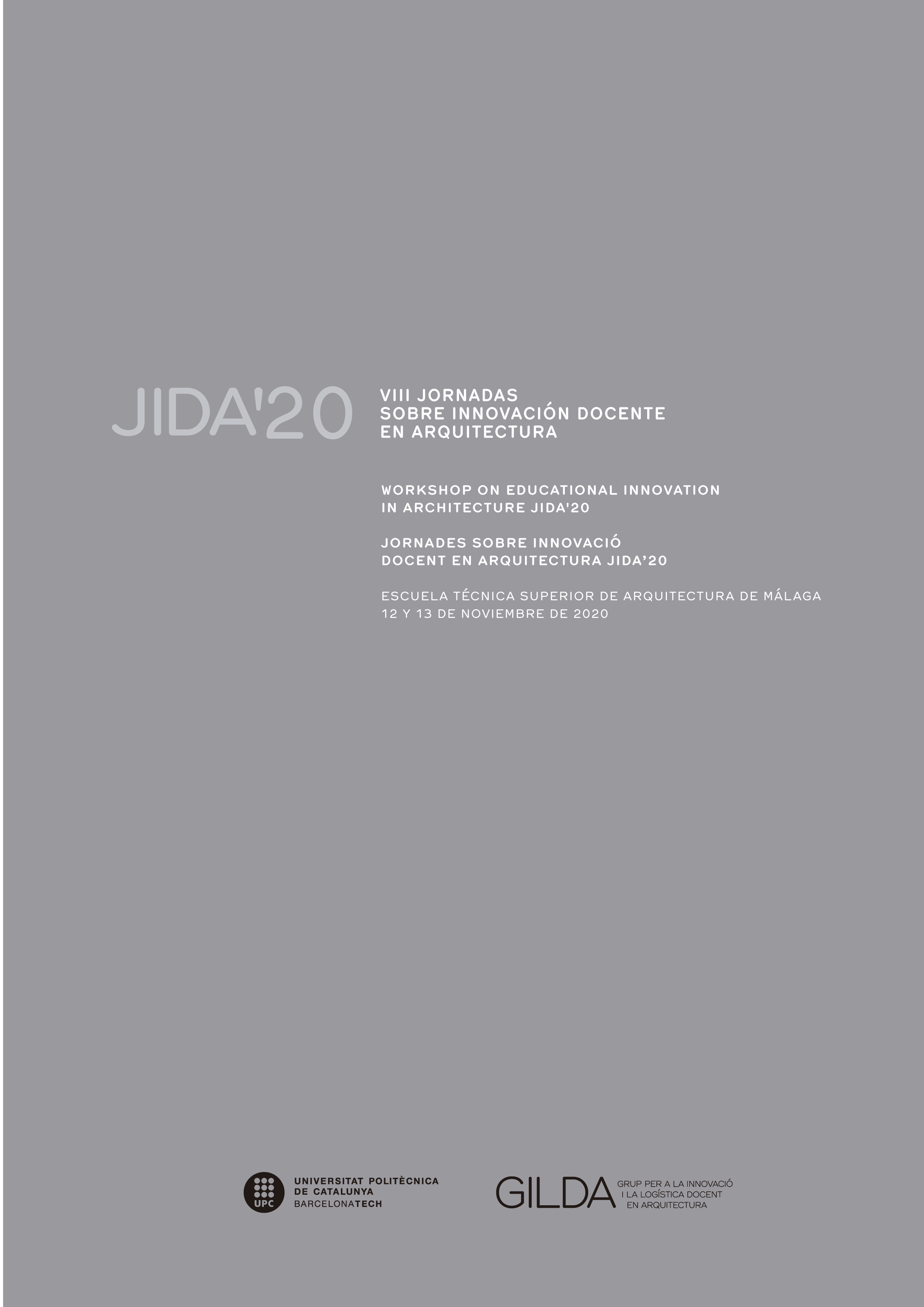Empathy through playing. The theory of loose parts in Design Thinking
DOI:
https://doi.org/10.5821/jida.2020.9468Abstract
"Toys are not really as innocent as they look. Toys and games are the preludes to serious ideas" (Charles Eames). In architecture and design, empathy is the phase of Design Thinking in which the user of a product or architectural space is taken into account to understand their needs and expectations, providing a valid, comprehensive and integrated solution. There are different techniques and tools that support and guide this process of empathy through ethnography, psychology and sociology. In this article we explore a case study in which real users are guided through playing with loose parts as a vehicle to know their needs and desires. This technique is used within a generative session context. It allows to acquire latent knowledge, neither explicit nor observable, and explores what people know, feel and dream at a deeper level.References
ALONSO GARCÃA, E.; y ZELLI, F. (2019). "Microarquitecturas súper abstractas: jugando con tizas, pensando arquitectura con las manos" en GarcÃa Escudero, D. y Bardà Milà , B.: VII Jornadas sobre Innovación Docente en Arquitectura (JIDA'19). Barcelona: UPC, p. 633-647.
CABRERO OLMOS, R. (2015). "Estrategias de gamificación en las enseñanzas de diseño" en 6º encuentro BID Centros Iberoamericanos de Enseñanza de Diseño. p.35-37. <http://bid-dimad.org/sextoencuentro/wp-content/uploads/2017/04/Publicacion_6encuentroBID.pdf> [consulta: septiembre 2020]
DETERDING, S.; KHALED, R.; NACKE, L.: y DIXON, D. (2011). "Gamification: Toward a definition" en CHI 2011 Workshop. Gamification: Using Game Design Elements in Non-Game Contexts. Vancouver, Canada. p. 1-4. <http://gamification-research.org/wp-content/uploads/2011/04/CHI_2011_Gamification_Workshop.pdf> [consulta: septiembre 2020]
FONTÃN DEL JUNCO, M.; BORDÉS, J.; y CAPA, A. (eds.) (2019). El juego del arte. PedagogÃas, arte y diseño. Madrid: Fundación Juan March.
GIL GIMÉNEZ, P.; y MARTÃNEZ RODRÃGUEZ, J.M. (2017). "Fast-Arq" en GarcÃa Escudero, D. y Bardà Milà , B.: V Jornadas sobre Innovación Docente en Arquitectura (JIDA'17). Barcelona: UPC, p. 5-22.
HOFFMAN, M. (2015). "Five things Charles & Ray Eames teach us about play" en Eames Office, 1 Diciembre. <https://www.eamesoffice.com/blog/five-things-charles-ray-eames-teach-us-about-play/> [consulta: septiembre 2020]
KOUPRIE, M.; y SLEESWIJK VISSER, F. (2009). "A framework for empathy in design: stepping into and out of the user's life" en Journal of Engineering Design, vol.20, nº.5. p. 437-448.
LANGE, A. (2015). "Serious Fun" en Why Magazine. The world of design at Herman Miller. <https://www.hermanmiller.com/stories/why-magazine/serious-fun/> [consulta: septiembre 2020]
MAUSHAUS. (2016). La arquitectura a través del juego. Barcelona: Fundación Arquia.
NICHOLSON, S. (1971). "How not to cheat children. The Theory of Loose Parts" en Landscape Architecture, 62. p.30-34. <https://media.kaboom.org/docs/documents/pdf/ip/Imagination-Playground-Theory-of-Loose-Parts-Simon-Nicholson.pdf> [consulta: septiembre 2020]
SENTIERI-OMARREMENTERÃA, C.; y NAVARRO-BOSCH, A. (2017). "El aprendizaje de la arquitectura a través del juego". en GarcÃa Escudero, D. y Bardà Milà , B.: V Jornadas sobre Innovación Docente en Arquitectura (JIDA'17). Barcelona: UPC, p. 363-379.
SLEESWIJK VISSER, F. (2009). Bringing the everyday life of people into design. Rotterdam: Technische Universiteit Delft.
STERN, A. (2017). Jugar. Valencia: Litera.
VELA, P.; y HERRÃN, M. (2018). Piezas sueltas. El juego infinito de crear. Valencia: Litera.






















